
How To Reduce Your Hot Water Bill
Last Updated: Feb 26, 2025In North America, we spend about 18 percent of our energy bills on heating hot water. The good news is that there are easy ways to reduce hot water usage short of replacing your hot water heater. For existing homes, you can use less water and make your home more energy-efficient. And for new homes, the upfront planning and design of your plumbing system can bring significant savings.
How to Use Less Water in Existing Homes
Recommending that you stop using hot water sounds like you’d have to sacrifice comfort and convenience. But you don’t—you need to be aware of your usage to reduce your energy bill. (Or you can shut off the hot water during your teenager’s 20-minute shower.)
Table of Contents
- 2. Laundry
- How to Be More Energy Efficient in an Existing Home
- How to Design for Efficiency for a New Construction
- Bottom Line

1. Faucets
Take a look at your faucets. Most of them are single throw—meaning there is only one handle, not two. Since one handle is easier to use, these faucets have become the standard and are ADA (Americans with Disabilities Act) compliant. The challenge is that the faucet handle sits in the middle. When you wash your hands, you usually throw the handle straight up. That brings hot and cold water. The hot water you have called for will rarely make it to the tap before you finish washing your hands. So, the heated water is lost in your pipes. It will sit in those pipes and cool down, wasting energy.
One solution? A few manufacturers create single-throw taps that provide cold water first. To get your hot water, the throw only allows one direction to turn from there (to the left).
Another straightforward solution is to install low-flow aerators for your bathroom sink faucet. WaterSense labeled fixtures provide for a maximum of 1.5 gallons per minute (gpm) flow rates. This saves you 30 percent on your water, compared to the standard 2.2 gpm faucets. Most of these savings will show up in a lower water bill. But if you are using hot water at your sink (for shaving, for example), you will save money on your energy bill as well. Faucet aerators can be free as part of a home energy audit or are available at your local hardware store for a few dollars.
2. Laundry
Washing all of your clothes in cold water is another simple step to using less hot water. Most new laundry soaps and washing machines are designed to work with cold water. So, there is no reason to wash in hot water!
3. Bathing
Most people in the 21st century take showers instead of baths, which typically use significantly less water (and hot water). But with all the fancy showerheads and jets and spas, the water consumption is climbing back up. Consider using low-flow showerheads to reduce your use of hot water. The newer low-flow showerheads are not like the ones of old that left you cold and miserable. The latest design and engineering science are taking low-flow to incredible new levels—like this Nebia showerhead.

How to Be More Energy Efficient in an Existing Home
1. Retrofit Your Shower with a Drain Water Heat Recovery Unit
If you live in a two-story home, you can realize an excellent opportunity to reduce your hot water bill—but it does require a retrofit of your shower.
The technology is called a drain water heat recovery unit. It means you “recover” some of the heat you have already used in your shower as it goes down the drain. The design is simple, but you need access to the vertical part of your drain line from the shower.

You will need to remove a 4 foot or 6 foot part of your existing vertical drain line from the shower to convert your shower. Then, replace it with a new drain line completely wrapped in copper pipe. This copper pipe is connected to your cold water line going to the shower. So, as your cold water climbs up and around the drain line to the shower, the hot water going down the drain runs along the outside walls of the drain line. The hot drain water is now in direct contact with the copper cold water line, which pre-heats the cold water line going to the shower. The warmer cold water supply will force the thermostatically controlled valve on your shower to throttle back the hot water. The result: keep the temperature the same, but use less hot water.
On a personal note, I have this on my upstairs shower, and I can confirm it works well. Before our bathroom renovation, we did not have a thermostatically controlled valve. So, when showering, I would have to continually turn down the shower temperature because it was getting hotter from the “cold” water line. I always thought this was awesome, knowing that I was saving hot water and it was working. My wife, however, thought it was a pain, so we installed the thermostatically controlled valve during the renovation.
2. Insulate
You want your hot water to stay hot within the lines. Insulating your hot water pipes reduces energy loss to the ambient wall and floor cavity, where you do not benefit from heating those spaces. If you can see any of your hot water pipes, you can easily slip foam insulation sleeves over those pipes. According to the U.S. Department of Energy, doing this can save 3 to 4 percent on your energy bill every year, with a cost of only about $10 to $15. But before you purchase them, be sure to measure your pipes’ diameters so that you get a snug fit.
In addition, is your hot water tank warm or hot to the touch? If it is, you may have an older hot water tank; it could use some extra insulation as well. The U.S. Department of Energy estimates that insulating your water tank can save you 7 to 16 percent of your water heating costs.
Before you embark on either of these DIY projects, though, check with your utility for potential rebates or reduced prices.
How to Design for Efficiency for a New Construction
Designing your home for efficiency can help you realize some significant savings. Consider your home’s floor plan. How far away is the hot water tank from your kitchen and each of your bathrooms? Now, think about the water lines. They do not run diagonally across your house; they all run in straight lines with 90-degree bends. Can you measure or estimate how long one of those runs is? Consider that a 30-foot stretch of pipe could hold a gallon of water. How many gallons of water will be in your pipes with the current layout?
Gary Klein recommends drawing a box over the area on your floor plan that your hot water piping runs for designers and builders. What percentage of your home’s square footage is that box? It is almost always far too big, with an opportunity for improvement.
Water Saving
Shop home improvement products that help save and conserve water.
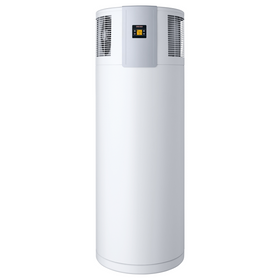
Stiebel Eltron Accelera 300 E Heat Pump Water Heater
Stiebel Eltron
Out of Stock
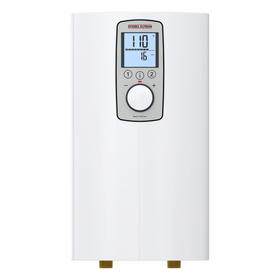
Stiebel Eltron DHC-E 8/10-2 Plus Point-of-Use Electric Tankless Water Heater - 202145
Stiebel Eltron
In Stock
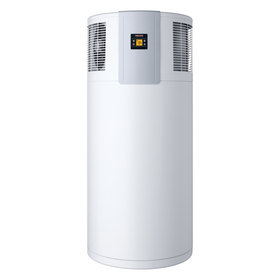
Stiebel Eltron Accelera 220 E Heat Pump Water Heater
Stiebel Eltron
In Stock
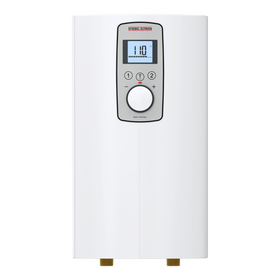
Stiebel Eltron DHC-E 3/3.5-1 Trend Point-of-Use Electric Tankless Water Heater - 200057
Stiebel Eltron
In Stock
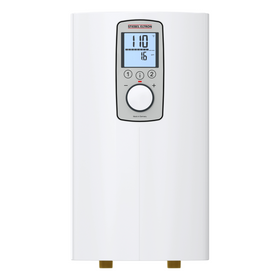
Stiebel Eltron DHC-E 12/15-2 Plus Point-of-Use Electric Tankless Water Heater - 200056
Stiebel Eltron
In Stock
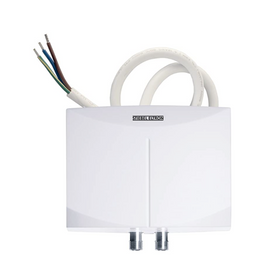
Stiebel Eltron Mini 2-1 Single Handwashing Sink Electric Tankless Water Heater
Stiebel Eltron
In Stock
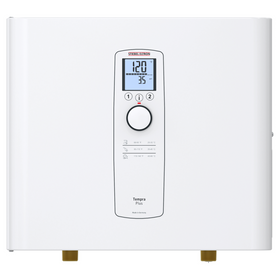
Stiebel Eltron Tempra 24 Whole House 24 kW 5 GPM Electric Tankless Water Heater
Stiebel Eltron
In Stock
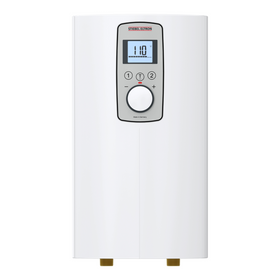
Stiebel Eltron DHC-E 8/10 - 2 Trend Point-of-Use Electric Tankless Water Heater - 200058
Stiebel Eltron
In Stock
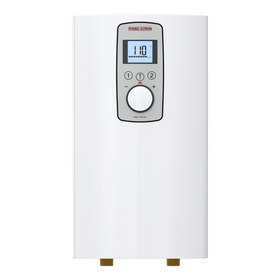
Stiebel Eltron DHC-E 4/6.2 - 2 Trend Point-of-Use Electric Tankless Water Heater - 200061
Stiebel Eltron
In Stock
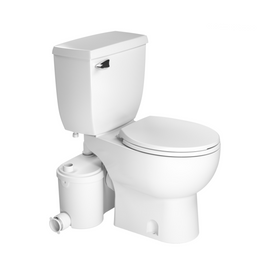
Saniflo Sanibest Pro Combo Macerator System
Saniflo
In Stock

If you are building new, think about where the hot water tank is located. Will it be near the kitchen or the master bedroom? Those two rooms are typically pretty far away from each other. Can you re-design your layout to have the smallest distances possible between your hot water supply and the taps? Locating bathrooms adjacent to or above another can save tremendous amounts of pipe required to run and wasted hot water. Design teams can build more efficiency into their buildings by incorporating this simple detail into their plans.
Bottom Line
Heating our water is the second-largest energy consumer in our homes. Small changes in how you use your hot water and the flow rates of your fixtures can help you reduce your monthly energy bill. When designing new, keep your wet rooms as close together as the program allows, and push your design team to make that a priority. Once you have the design, ensure the plumbing professionals use the smallest size pipes allowable, keep the runs short, and insulated. (Oh—and put an easy shut off to your hot water supply for those pesky teenagers and their long showers. They will quickly learn to keep them short when it goes ice cold.)
Stephen Collette
Stephen Collette is a Building Biologist, Building Science Consultant, LEED Accredited Professional, and a Heritage Professional. Stephen is the owner of Your Healthy House and lives in Lakefield, ON with his wife and 2 daughters.
